For growing utility providers
HOW TO CHOOSE THE RIGHT BILLING SYSTEM
For growing utility providers
Introduction
Changing market redefines how utility providers operate
The utilities industry is in the middle of a seismic shift. Between changing service demands, legacy systems becoming outdated because of leaps in technology, and increasingly savvy customers asking for more control and transparency, utility companies are under growing financial and social pressure to adapt, innovate, and meet the needs of the modern customer.
For most utility companies, responding to these challenges will necessitate fundamental operational changes and novel solutions – an uphill task made even more difficult by the current economic pressures of a dynamic market and fluctuating pricing. And yet, an ever-changing market creates new opportunities for utility providers.

Those willing to adapt to new trends, new services, and new business models may find themselves rapidly growing their market share and taking a leading role in shaping the utilities landscape of tomorrow, which promises to be completely different from that of today. This aspiration will require a utility provider to become more agile and improve its operational efficiency. From drones for powerline inspection to intelligent software for billing, modern technologies can assist by reducing legwork and automating processes, thus facilitating scalability, and aiding a smoother transition from legacy service provider to modern utility company.
The billing system is a core operation which can be either a bottleneck or an enabler for new business opportunities. Operational efficiency and a great customer experience underpin all successful utility businesses. To excel in these areas, utility service providers need a powerful billing solution that is designed for their industry, adaptable to the latest trends, and configurable to their specific requirements.
In this whitepaper, we explore how utility billing systems have evolved, what a modern one looks like, and what benefits it brings a contemporary utility company.
The evolving role of the utility billing system
Historically, billing has been a messy affair requiring significant resources to go from a meter reading to a paid invoice. The billing process is fragmented, with different systems for each step – one for meter data, one for billing, one for financial management, and so on.
To this day, many utility providers still depend on such siloed processes. This hampers not only their
operational efficiency but also their agility to react to market changes. Heavy manual background processing also limits scalability, as any increase in capacity necessitates equivalent additional resources to handle the workload.
A modern utility billing system addresses these issues by bringing everything under one roof, creating a single, automated
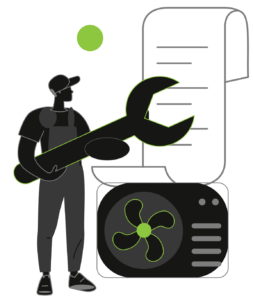
Having an integrated system covering the entire customer lifecycle enables extensive automation. By design, labor-based processes such as billing and invoicing are simplified, and intermediate manual data transfers are eliminated. This also drastically reduces the costly human errors that come with those processes.
No longer fully constrained by labor considerations, such systems enable the unprecedented flexibility required of a modern utility company. Smart billing solutions facilitate better supply and demand management, enable faster time-to-market for new products, and accelerate the growth of new types of customers, tariffs, services, and delivery. This flexibility can be leveraged to differentiate from the competition via more tailored offerings.
A joined-up platform creates new opportunities and additional benefits. Built-in business intelligence can be used to track and measure the performance of existing and new products, and deliver accessible operational insights, without having to involve a team of data analysts. Easy-to-implement customization and integrations allow system capabilities to be easily expanded to adapt to fastchanging market requirements, keeping everything in one place and avoiding harmful fragmentation of systems in the future.
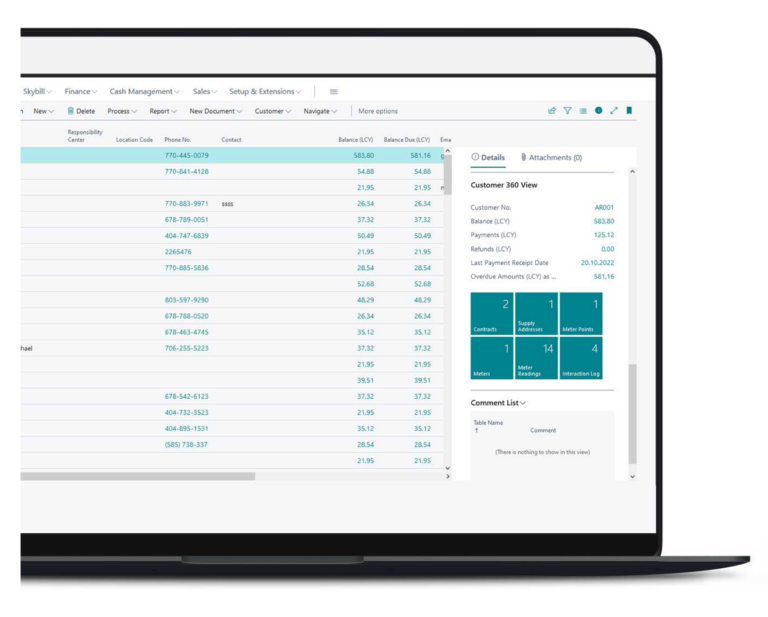
As well as improving operational efficiency, a modern utility system should also facilitate a better customer experience. The solution should offer a customer portal integrated with the backend for reliable, up-to-date information and payment options. Having a single source of truth for your support team allows them to resolve issues more quickly and effectively, boosting the company’s reputation.
In short, the billing system has evolved from an isolated, single-purpose tool into an all-encompassing platform that massively simplifies and accelerates both internal and external billing-related processes.
Core components of a modern billing and CIS system
Integrated utility billing systems come in all shapes and sizes, offering different combinations of capabilities, but the greatest, joined-up potential can only be realized by those which offer the most comprehensive functionality.
With all components integrated into a single platform, it becomes significantly easier to optimize operations, remove unnecessary hurdles, and automate processes. But what are the key components to look out for in a modern billing and CIS system?
Generally speaking, there are interconnected billing tools and processes that benefit from centralization and integration. These are your customer information system, billing, payments and collections, meter data management/ Validation, Editing and Estimation (VEE), finance management and reporting, and integrations.
Let’s take a look at each component and its importance in turn.
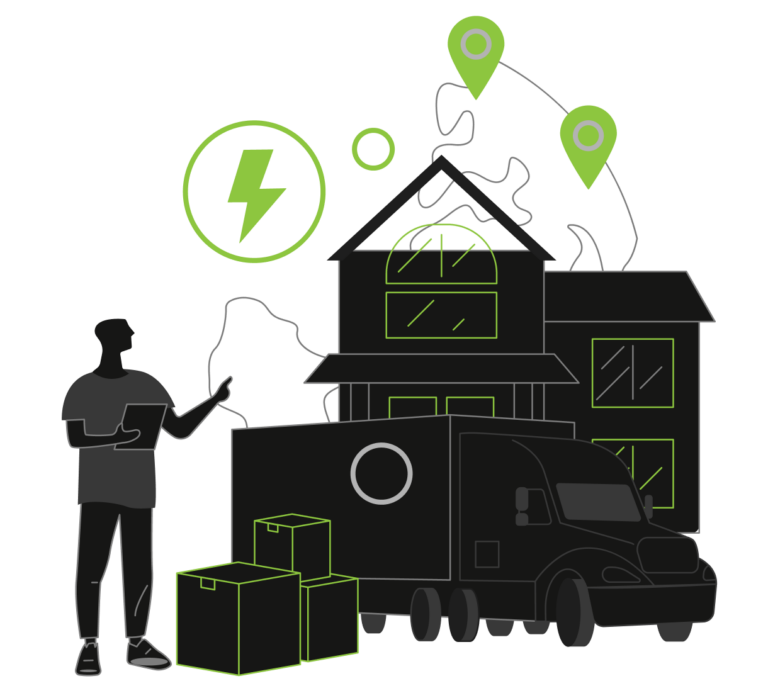
1. Customer information system (CIS)
The utilities industry is particularly complex in how customer accounts are managed. A variety of services may be provided to different customers (tenants and landlords) under one or multiple addresses. Accordingly, at the heart of a modern utility billing system lies a robust and versatile CIS that includes:
- Contract management – combining different meter types and multiple building addresses.
- Building aggregation – residential units and sub meters.
- Rental property – landlord and tenant contracts.
- 360 customer view – all customer information in one place, 1 click away.
- Issue management – receive requests from customers and send responses.
- Customer self-service – a mobile-friendly, white-label customer self-service portal featuring invoices, usage data, historical data, and an online payment option.
- Landlord portal – web portal for landlords to manage their properties and tenants.
2. Tariffs and perunit rates
A modern solution must also include a flexible charging engine for each supported utility. That includes simple solutions, such as consumption-based and standing charges, as well as more advanced approaches, like time of use rates (TOU), step and block rates, and indexing. The system should be configurable to enable new product and service implementation.
3. Meter readings
Meter data analysis and management is a core component that enables extensive automation and validation, avoiding faulty meter readings and other related incidents. Proven VEE processes may enable providers to simplify data operations and thus improve billing accuracy and data analysis.
4. Billing and invoicing
The connected billing and invoicing component should be able to calculate and send invoices automatically to a predetermined schedule. It should provide a clear overview of the entire ledger, billing, and invoicing process, as well as support both individual and mass billing scenarios. Ideally, the integrated system leverages billing data as instant business intelligence.
5. Payments and collections
To cover the entire customer lifecycle, a modern utility billing and CIS system must include payments, recognizing the growing diversity in payment methods, such as direct debit (GIRO), credit cards, cheques, and wire transfers, as well as numerous payment processing apps. Built-in solutions for late payment communication (dunning, reminder) and fee management are also a must to ensure the entire billing process remains within a single ecosystem.
6. Financial management
Business reports, multidimensional analysis, defining the chart of accounts – these tools can deliver immediate and valuable insights. Answers that used to require messy exports and manual labor are now available at the click of a button. This also extends to fullscale CRM, supply chain management, HR, Project management, and reporting, all of which can be accessed by the staff whenever and wherever they are.
7. Integrations
To stay relevant as time moves on, a modern billing solution requires an API to support various custom integration scenarios. From solving utility company-specific needs to leaving the door open for future innovations, an API enables the greatest flexibility for further integrating, automating, and futureproofing utility billing processes.
Together, these components form a powerful solution that streamlines billing by connecting the formerlysiloed processes and automating wherever possible. The streamlining of heavy manual processing allows modern utility systems to enable unprecedented scalability, as new customers and services can be easily on-boarded and managed without having to extend your team.
Required capabilities checklist
Having covered the core components of a modern utility billing system, it’s time to dig into the specific capabilities such a solution should offer. It’s not enough to mash components together – they must work in synergy and address the real-life, day-to-day requirements key to the smooth operation of a utility business.

Extensibility and scalability
The underlying theme that defines each component and the modern utility billing system at large is flexibility. In this day and age, it’s increasingly common for utility companies to be – or strive towards becoming – multi-service providers. Accordingly, to avoid the pitfall of siloed operations, today’s utility billing system must support every utility service – electricity, solar power, gas, water, sewage, district heating, pollution, and more. All while ensuring excellence in each one.
Of course, each service requires its own tariff configuration, hence a built-in powerful tariff configurator must account for this variety and permit the utility billing system to deal with a plethora of scenarios and needs.
For instance, a modern solution must have the ability to apply consumption-based and fixed/step rates, time-of-use periodic charges (e.g., standing/daily rates), as well as discounts. Plus, the system has to support any number of bill determinants, such as flat rate, usage-based, meter and point-based, allocations, days, contract-specific pricing, and price indexing.
Additionally, today’s billing system has to take into account diverse customer profiles, supporting everyone from industrial and corporate clients to SMEs and residential customers, allowing bills to be generated by customer, customer group, or property on a monthly, yearly or any other periodic basis. Combined bills for a single location, or separate bills for each customer; postpaid and prepaid plans – these are core features expected of any modern solution both by utility companies and their customers to meet the needs of individual supply addresses and the people living there.
Tariff administration
As mentioned, in response to growing customer and service diversity, flexibility in tariff administration is a must. Any utilities industry-oriented solution must ensure quantity tracking and rate setting tailored to each individual utility type from water and electricity to waste and cooling.
Different configurations of tariff administration should be built into the system, allowing for fixed rates,
consumption-based rates, formulas, calculations based on contract parameters (e.g. kVA, Phases, m2, m3, etc.), daily/standing charges, bulk consumption allocation, bulk difference allocation, rate indexing, and step/block tariffs. Custom extensions must also be possible for fringe cases.
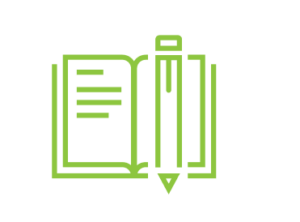

Meter Data VEE
Before carrying on with the billing process, meter data collected from AMI or entered manually must be validated according to predefined validation rules.
A robust VEE module allows you to define and detect exceptions like missing reads, consumption spikes, and negative consumption as well as define custom rules for exception handling. Another necessary core capability is the estimation of missing reads.
Customer management and self-service
A CRM module and contract-management system ensures all customer information is tracked, manageable, and easily accessible. It must be intuitive to use and facilitate quick access to a 360-degree customer view which provides a convenient overview of important elements of the customer profile, including balance, payments, interactions, consumption, contacts, and contracts.
On the customer side, a self-service portal and mobile app are required to grant them access to their own information and ensure easier relationship management. Such a selfservice platform must allow users to view and pay bills, track consumption, and submit meter readings independently. In an ideal scenario, the platform should be white-label, namely customizable according to the utility company brand, thus ensuring a unified customer experience across every touchpoint they have with the utility provider.


Full-scale finance management and reporting
Between bank payment, security deposit, and cash flow management tools, a modern utility billing system serves as a hub for the various daily financial processes of a utility company, including managing receivables/payables, as well as debt collection and associated customer communications (dunning).
From accounting to reporting, such a system accelerates core management processes by helping utility providers avoid the menial task of data exports, imports, and inputs.
For instance, through Power BI and other integrations, as well as extensive premade and customizable reporting options, it should be possible to work directly within the billing system to produce the financial and other insights a utility provider needs both for day-to-day operations and long-term strategic planning.
Easily adapting the system to local markets is another key factor traditional systems struggle with. It should be possible to fully localize the system for a particular country, from currency to details such as VAT, taxes, and reports to financial institutions.
Other important considerations
Utility companies are increasingly turning to SaaS (software-as-a-service) solutions for cost and operational-efficiency considerations.. Using a cloud-based solution, as opposed to the traditional self-hosted model, means that there is no IT infrastructure to maintain, which significantly reduces overhead. Hardware and software maintenance are no longer your problem.
On top of that, SaaS solutions typically offer a pay-as-you-go model ensuring fair pricing based on usage, rather than having large upfront and maintenance costs.
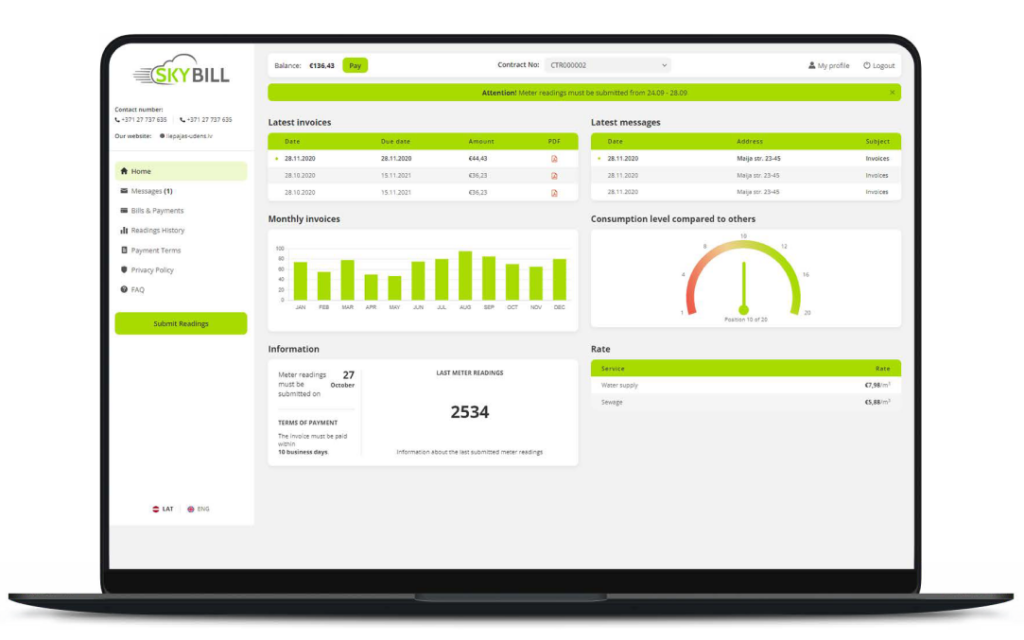
A SaaS-based solution is good news for your workers and customers, too. These are, by design, web-based and device-agnostic, which ensures that the platform can be accessed from anywhere with an internet connection, without requiring any app downloads or updates.
It is no secret that there’s turbulence facing the utilities industry today and things are changing quickly, making adaptability a core requirement for any solution that purports to be future-proof. That’s why the aforementioned flexibility and extensive capacity for integrations, along-side a modern SaaS-based model must underpin any contemporary solution. The platform should stretch through significant customization to meet as-yet-unknown needs while maintaining a robust, and reliable foundation of core functionality.
Indeed, this core functionality cannot be undervalued. Flexibility is important but it cannot come at the cost of hyper-tailoring that can cause massive delays in implementation and timeto-market. Accordingly, any modern billing solution must come with comprehensive out-of-the-box capabilities that cover the needs of today’s utility provider and serve to optimize their operations. The flexibility for customization is primarily intended for edge cases and unique scenarios.
One of the benefits of a SaaS model is continuous product delivery. That is – new updates become available instantly, as opposed to the traditional model where new features are delivered in batches once a quarter, or even less frequently. Accordingly, it’s important to pay close attention whether the team behind the solution is actively upgrading and bettering it in response to industry dynamics. This, for example, ensures fast accessibility to new in-demand features without having to resort to time-consuming customization.
In short, while extensive flexibility is invaluable, it isn’t something that should be overly relied on. A modern solution should allow most utility providers to get up and running without any major modifications to the platform, thus drastically shortening time-to-market while leaving ample room for tailoring it to individual, unique requirements.
Offering all of the above and more – SkyBill
SkyBill is one such solution that not only incorporates all the components and capabilities discussed above but also synergizes the various pieces to form a gold standard system that’s already in use by utility service providers worldwide, helping them improve operational efficiency across key business areas. Built on and incorporating Microsoft Dynamics 365 Business Central, SkyBill allows our clients to benefit from the many proven capabilities on offer.
Conclusion

Operational efficiency and a great customer experience underpin all successful utility businesses. To excel in these areas, utility service providers need a capable billing solution that is designed for their industry and can be configured to their specific requirements.
Automating key processes throughout the meter-to-cash cycle is essential, from meter data collection right through to receiving payments. Utility retailers must also be able to rapidly introduce new services that fit household customers’ lifestyles, such as time-of-use (TOU) tariffs or prepaid plans. Meanwhile, your industrial/commercial (I&C) customers need more complex and customized tariff schemes. Self-service is also fundamental so that customers from all segments can pay bills and manage their accounts online or on their mobile devices. Many utility companies are also recognizing the benefits of migrating their billing to cloudbased services.
You benefit from any new functionality as soon as it becomes available. Pay-as-you-grow licensing models help you run your business operations more efficiently too, improving the total cost of ownership of business support software and aligning your billing costs with customer growth.
We have built SkyBill Utility Billing to meet the needs of all types of utility companies. SkyBill is a fully automated meter-to-cash solution for utilities, which can run your entire business efficiently in the cloud. Built on and incorporating Microsoft Dynamics 365 Business Central, it fully integrates your ERP and billing operations. As a web-based service, SkyBill is accessible from any device (desktop, tablet, mobile), without installing any software.
Get in touch with us for a ’no sales pitch’ live demo, free trial, or if you just need advice.
